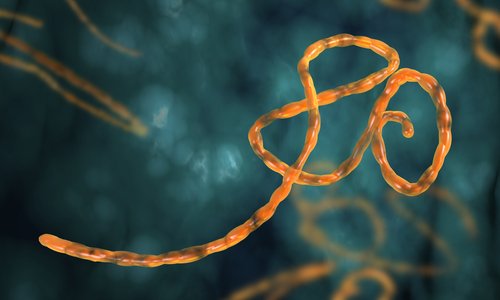
Ebola probably hasn’t gotten you to change your travel plans much yet, but the ongoing outbreak of enterovirus 68 or the invasion of Chikungunya-carrying mosquitoes in Florida has at least given you pause about sending your kids out to play. Infectious diseases are always a global issue, but this particular combination of outbreaks has many of us on edge.
Recent innovations in DNA analysis have given scientists and epidemiologists new ways to track and treat outbreaks, and many of these tools are already being deployed in the battle against Ebola and other diseases. Technologies at work today, as well as those expected in the years to come, will be of real utility in helping the biomedical community understand these pathogens better, provide a real-time warning system about outbreaks, and trace their source and spread over time.
For example, as DNA sequencing has gotten faster, cheaper, and more accurate, scientists have been able to analyze the genomes of the pathogens causing these outbreaks. To those just watching breathless CNN coverage, all Ebola looks the same; but to scientists who specialize in it, certain genetic markers may offer important clues about which treatments will be successful or how virulent a certain strain might be. For example, genomic analysis has shown that the current outbreak was probably started by an infected human, rather than by exposure to infected animals as is often the case for Ebola.
As a strain morphs over time, developing slight genetic differences as it spreads from host to host, DNA sequencing can be used to determine the exact transmission path, to distinguish between related and sporadic infection events, or to detect precisely when a pathogen acquires resistance to medications. Knowing the transmission path of an outbreak is enormously helpful to scientists; this type of work was recently used to figure out whether an outbreak at the NIH Clinical Center began with a hospital-acquired infection or with a previously infected patient who got a false-negative on a routine screening test.
Establishing that path of transmission can have consequences beyond medicine: such analysis was used during the cholera outbreak in Haiti a few years ago to defuse a growing political crisis about who was responsible for bringing the disease to the country. Based on DNA sequence, scientists determined that the outbreak strain was more closely related to strains seen in south Asia than those endemic to Latin America, lending weight to the theory that peacekeepers from Nepal had sparked the epidemic.
Years ago, studies like this would have been prohibitively expensive and taken far too long to make any difference during an outbreak. Today, sequencing is so cheap and fast that it’s close to being ready for mainstream clinical use. The CDC directed millions of dollars this year alone to find ways to deploy DNA analysis tools in outbreak investigations. We’ve learned valuable information about virtually all pandemics in the past several years by analyzing them with DNA sequencing during the outbreak. One of the earliest was SARS in 2003, when scientists used the most advanced DNA tools of the day to identify the virus wreaking havoc in Asia. Having that information could ultimately be used in the development of a SARS treatment or even a vaccine.
In the future, DNA sequencing and other analysis tools will provide information that will be important for regular folks, not just infectious disease experts. Google has already made a mark with its flu-tracking map, updated continuously to show regions where more people than usual are searching for information about flu-like symptoms. The map offers an at-a-glance view of where flu activity is likely to be highest. It is widely expected that DNA will also be used for this type of early warning system; data could be compiled to create a similar sort of mapping to chart, and even predict, the spread of infectious diseases.
Tracking pathogens by their DNA in more and more locations will be critical to this type of advance. (We really like one example of scientists and volunteers using genomics to identify pathogens found around New York City, reporting them in this handy map.) Such mapping will ultimately include the most micro definition of locations: individual households. Some scientists predict miniature DNA-reading technologies that could analyze human waste passing through toilets, detecting non-human genetic signatures and beaming back relevant updates about microbial genomes. That information could be used within the household to alert someone to, say, very early evidence of antibiotic-resistant bacteria gaining traction in his gut—but could also be pooled with other data to identify neighborhoods where foodborne illness, for instance, was becoming a problem.
While the ultimate goal of the biomedical community is disease prevention, being able to predict the spread of infectious disease is an ambitious next step. The ability of DNA-based tools to identify health problems early, and the use of big data to mine that information for trends and patterns, will be critical to the development of an early-warning system that could significantly reduce the impact of outbreaks.
Could DNA Tools Help Manage Ebola?
Recent innovations in DNA analysis have given scientists and epidemiologists new ways to track and treat outbreaks, and many of these tools are already being deployed in the battle against Ebola and other diseases. Technologies at work today, as well as those expected in the years to come, will be of real utility in helping the biomedical community understand these pathogens better, provide a real-time warning system about outbreaks, and trace their source and spread over time.

















